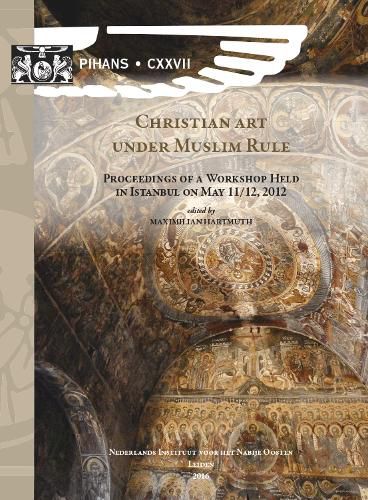Readings Newsletter
Become a Readings Member to make your shopping experience even easier.
Sign in or sign up for free!
You’re not far away from qualifying for FREE standard shipping within Australia
You’ve qualified for FREE standard shipping within Australia
The cart is loading…






In the vast expanse of lands in the Mediterranean and Near East that
came under Muslim sway in and after the seventh century, the spread of
Islam at the expense of Christianity was a more gradual process than is
often acknowledged. While the status of Christians was indeed reduced to
that of a tolerated community, the production of religious art within
such congregations was not brought to a halt (as the silence about it in
traditional art history might suggest). Rather, it simply continued, and
often very productively, under different precepts. While some examples,
such as the art of Mozarabs and Copts, are better known, Christian
artistic production in other Muslim contexts and in the period after the
Mongol invasion is less explored. Moreover, there have been few attempts
to integrate this body of art into mainstream art history.
The
workshop from which most of these papers were collected sought to
explore to what extent this art produced under non-Christian rule, when
collected together, irrespective of period and region, can serve as a
useful frame for analysis. It aimed to do so by bringing together
scholars working on different territories in the Islamic world between
the seventh and nineteenth centuries to present and discuss case studies
with a view to identifying common threads.
$9.00 standard shipping within Australia
FREE standard shipping within Australia for orders over $100.00
Express & International shipping calculated at checkout
In the vast expanse of lands in the Mediterranean and Near East that
came under Muslim sway in and after the seventh century, the spread of
Islam at the expense of Christianity was a more gradual process than is
often acknowledged. While the status of Christians was indeed reduced to
that of a tolerated community, the production of religious art within
such congregations was not brought to a halt (as the silence about it in
traditional art history might suggest). Rather, it simply continued, and
often very productively, under different precepts. While some examples,
such as the art of Mozarabs and Copts, are better known, Christian
artistic production in other Muslim contexts and in the period after the
Mongol invasion is less explored. Moreover, there have been few attempts
to integrate this body of art into mainstream art history.
The
workshop from which most of these papers were collected sought to
explore to what extent this art produced under non-Christian rule, when
collected together, irrespective of period and region, can serve as a
useful frame for analysis. It aimed to do so by bringing together
scholars working on different territories in the Islamic world between
the seventh and nineteenth centuries to present and discuss case studies
with a view to identifying common threads.